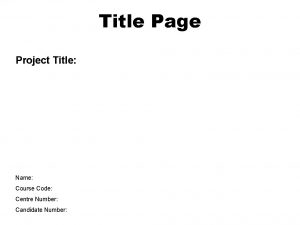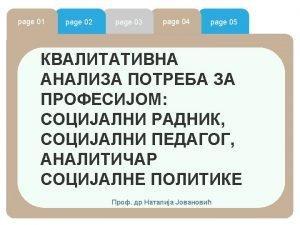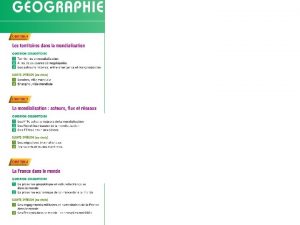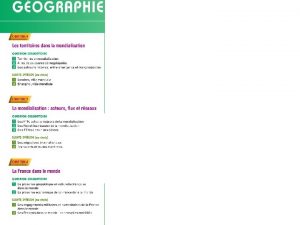PAGE 29 Rock 1 Rock 2 Rock 3












- Slides: 12

PAGE 29 Rock 1 Rock 2 Rock 3 0 0 0

Frame of reference (page 28, Answers only) • Start with all the rocks at zero. • Move rock #1 up 1 space and rock 3 down 1 space. • 1) How far did rock #1 move in relation to rock #2. • 2) How far did rock #1 move in relation to rock #3. • Move rock #1 up 2 spaces, rock #2 up 1 space, and rock #3 down 1 space. • 3) How far did rock #1 move in relation to rock #2. • 4) How far did rock #1 move in relation to rock #3.

Page 29 of INB (under frame of reference) • Step 1: place the ramp with 2 books under the starting point. • Step 2: role the marble down the ramp and measure the time to reach the finish line. • Step 3: repeat steps 1 and 2 raising the ramp by one book each time. Total Distance 2 Books 3 Books 4 books Time SPEED (d/t)

Page 28 (under frame of reference) 1) Calculate the average speed for each trial. (S = D / t) 2) How did the height of the ramp affect the speed? 3) Explain why the height of the books affected the speed?

Measuring Motion Page of 31 INB

Essential Question: • What is the difference between speed and velocity?

Observing Motion: • Objects must be observed in relation to other objects. This gives a frame of reference. • If an object changes position with respect to the frame of reference it is in motion.

Distance vs Displacement • Distance is the measure of the actual path taken. • Displacement is the measure from start to finish. • Displacement must include a direction.

Speed: • Speed: how fast an object is moving. • Distance / Time • Constant Speed: object covers the same distance over an equal time period. (cruise control) • Most objects do not move at a constant speed, so our measurements are average speeds. • Instantaneous Speed: extremely small intervals.

Speed vs Velocity • Velocity is speed with a given direction. • Describe relative to a reference point. • Can be combined. (kid on a school bus).

Copy this Graph 0 n page 30. Series 1 100 80 60 40 20 0 0 1 2 3 Series 1 4 5 6 7

Review Questions page 30 1) Explain the relationship between motion and frame of reference. 2) Identify the following as speed or velocity: A) 88 Km/hr b) 9 m/s west c) 10 ft/min down d) 27 m/s 3) What measurements would you need to find the average speed of a runner at a high school track meet? 4) Using the graph on page 30 a) What is the average speed for the entire 7 seconds? b) What is the average speed for the first 2 seconds? c) what is the average speed between seconds 2 and 4?
 Igneous rock to metamorphic rock
Igneous rock to metamorphic rock Does apa require a title page
Does apa require a title page A rock climber's shoe loosens a rock and her climbing buddy
A rock climber's shoe loosens a rock and her climbing buddy Rock cycle sedimentary
Rock cycle sedimentary Chapter 3 standardized test practice answers
Chapter 3 standardized test practice answers Igneous metamorphic and sedimentary
Igneous metamorphic and sedimentary Rock life cycle
Rock life cycle Climbing rock climbing
Climbing rock climbing Project title page
Project title page 2webdesign
2webdesign Quotes from the things they carried
Quotes from the things they carried Rosetta stone admin login
Rosetta stone admin login Cover page essay
Cover page essay























